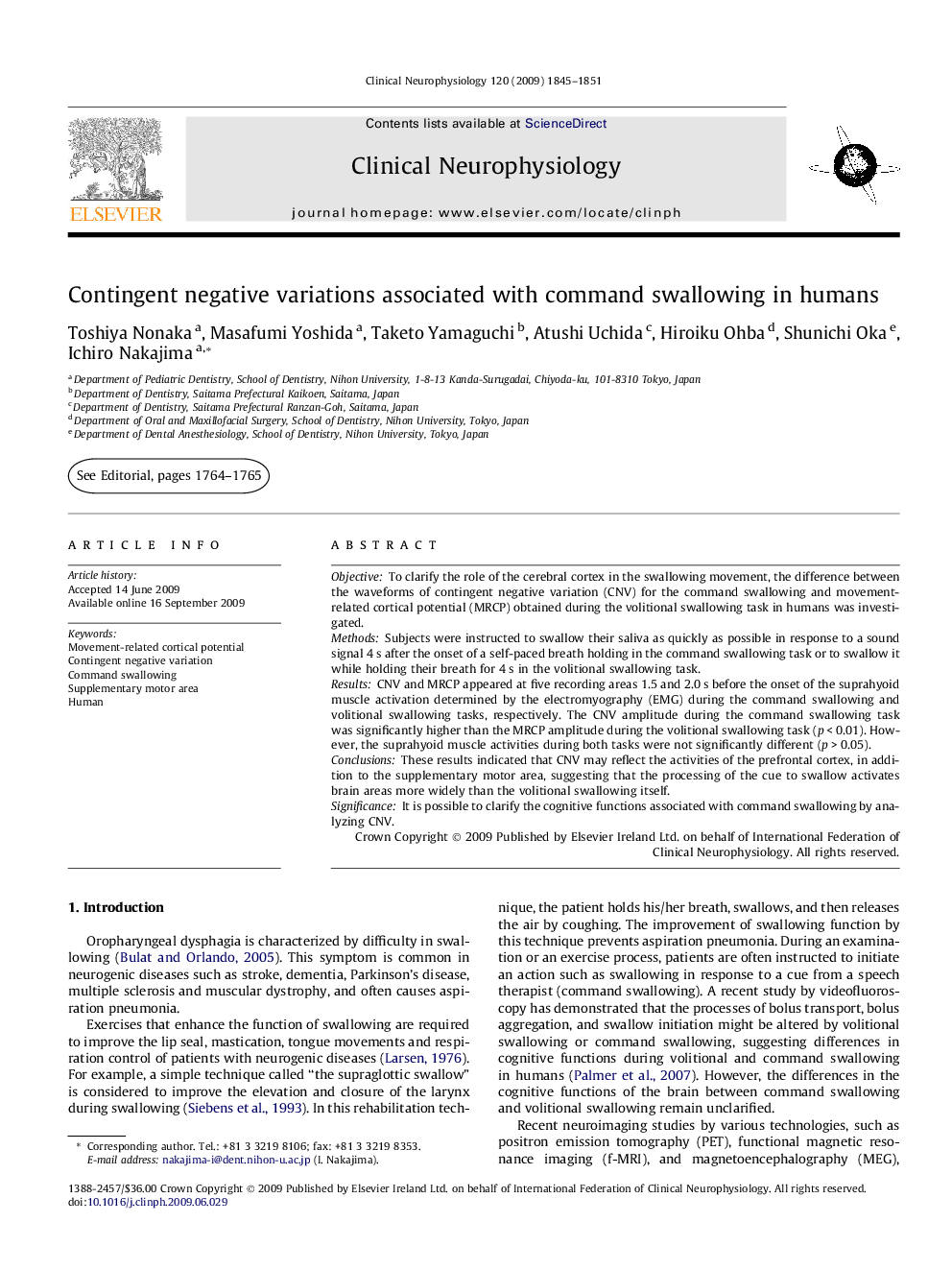| Article ID | Journal | Published Year | Pages | File Type |
|---|---|---|---|---|
| 3046153 | Clinical Neurophysiology | 2009 | 7 Pages |
ObjectiveTo clarify the role of the cerebral cortex in the swallowing movement, the difference between the waveforms of contingent negative variation (CNV) for the command swallowing and movement-related cortical potential (MRCP) obtained during the volitional swallowing task in humans was investigated.MethodsSubjects were instructed to swallow their saliva as quickly as possible in response to a sound signal 4 s after the onset of a self-paced breath holding in the command swallowing task or to swallow it while holding their breath for 4 s in the volitional swallowing task.ResultsCNV and MRCP appeared at five recording areas 1.5 and 2.0 s before the onset of the suprahyoid muscle activation determined by the electromyography (EMG) during the command swallowing and volitional swallowing tasks, respectively. The CNV amplitude during the command swallowing task was significantly higher than the MRCP amplitude during the volitional swallowing task (p < 0.01). However, the suprahyoid muscle activities during both tasks were not significantly different (p > 0.05).ConclusionsThese results indicated that CNV may reflect the activities of the prefrontal cortex, in addition to the supplementary motor area, suggesting that the processing of the cue to swallow activates brain areas more widely than the volitional swallowing itself.SignificanceIt is possible to clarify the cognitive functions associated with command swallowing by analyzing CNV.
